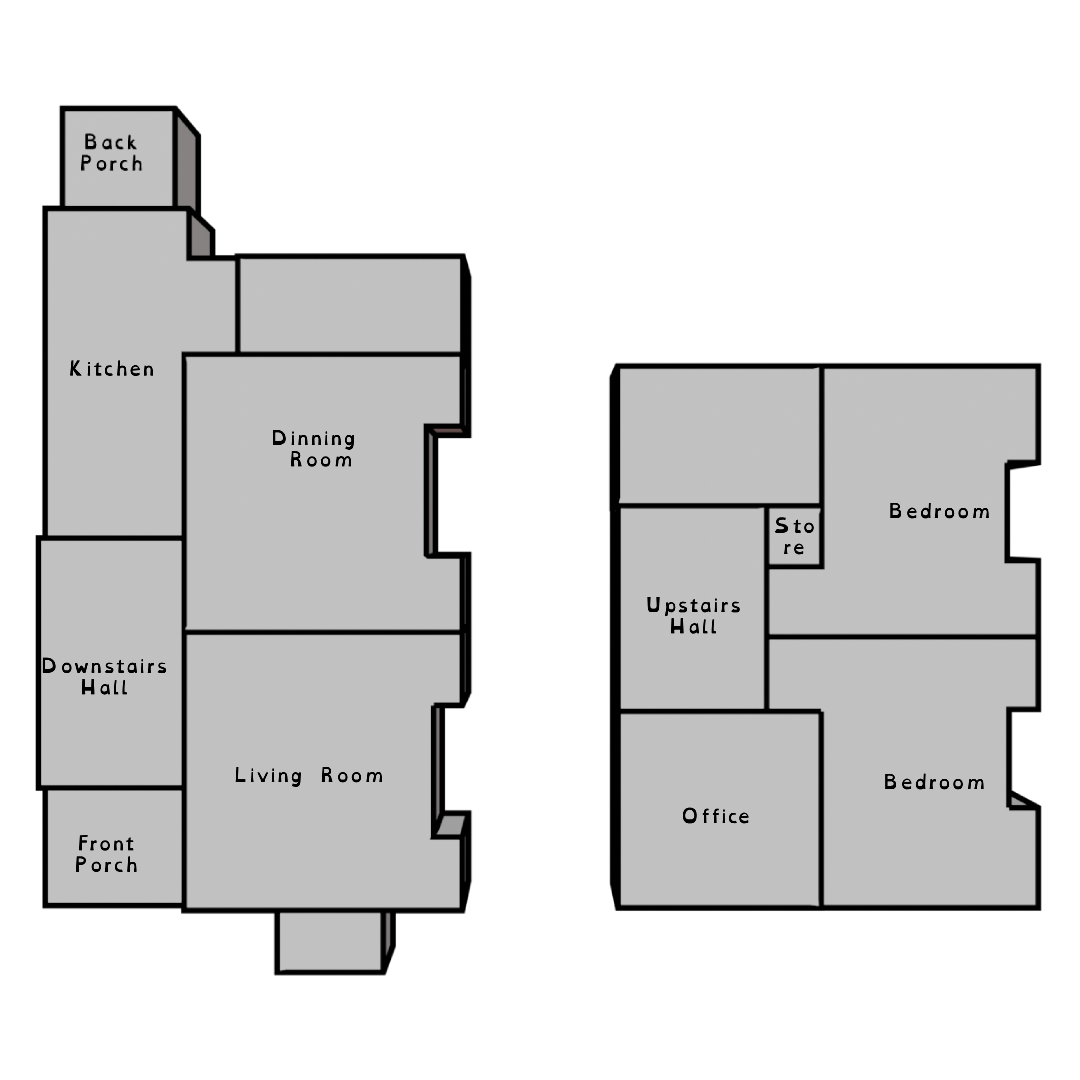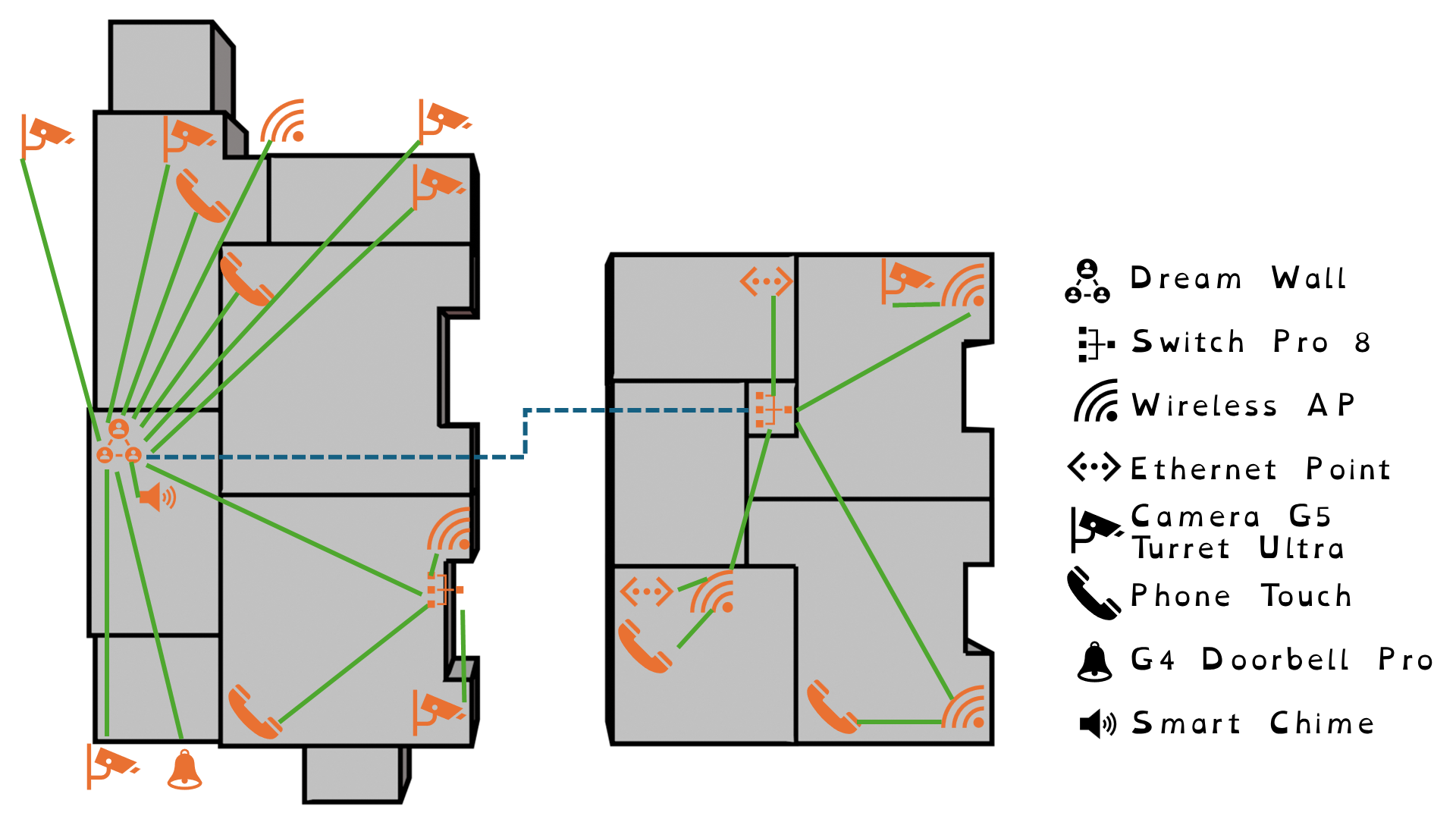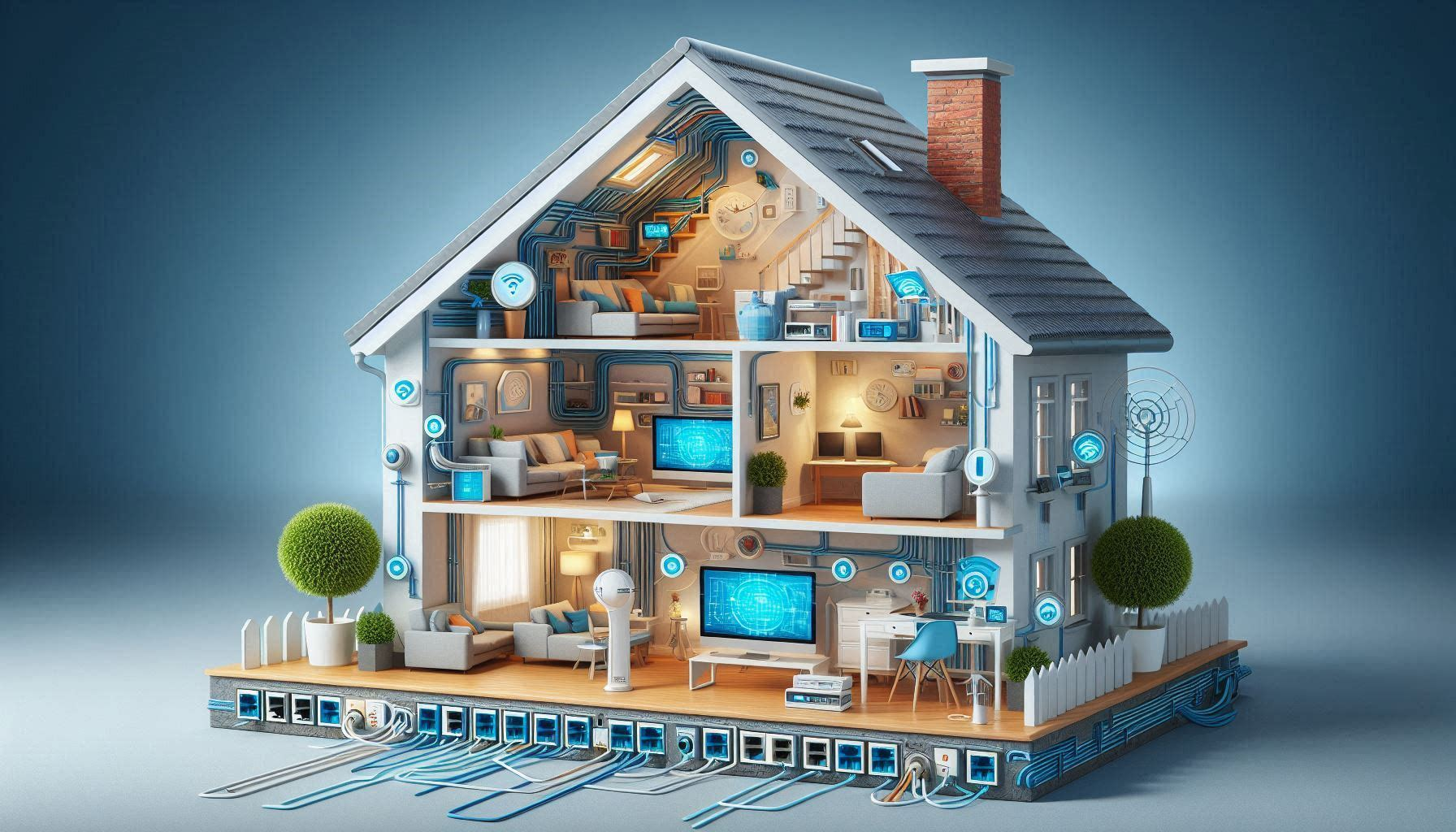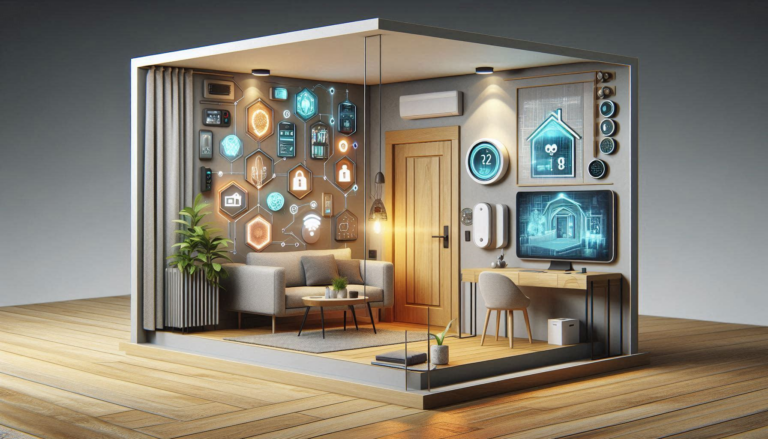Creating a Plan for My Home Network Upgrade
I’ve been mulling over giving my home network a facelift for some time. Right before the big move, I snagged a few Ubiquiti Access points that were on their last legs, support-wise. Surprisingly, they’ve been doing a stellar job blanketing the house with Wi-Fi. So, I figured, why not take a plunge into the Ubiquiti rabbit hole and see what adventures await in the realm of connectivity?
Who is Ubiquiti
Founded in 2003 in San Jose, California, Ubiquiti is an American technology company now based in New York City. The firm offers a diverse range of wired and wireless data communication products for home and enterprise environments under multiple brand names. Committed to democratizing network technology, Ubiquiti has distributed approximately 85 million devices globally, playing a pivotal role in the development of network infrastructure in over 200 countries and territories. Its enterprise networking products are complemented by the UNMS and UniFi software platforms, which facilitate widespread Internet access and integrated IT administration, respectively.
I discovered Ubiquiti not long after moving to Bridlington while searching for an ISP. My landlord wasn’t happy with the idea of drilling a hole in the already shaky window frame. During my search for alternatives, I stumbled upon a local Wireless ISP offering a great deal, even better than the fixed landline options. A few days later, they installed a receiver (a Ubiquiti NanoStation M2) on my window using a suction cup, and just like that, I was all set up. Naturally, as the curious creature I am, I peeked into Ubiquiti’s world of gadgets and got lost in the vast wonderland of their offerings, seemingly setting up camp there indefinitely.
Ubiquiti offers more than just equipment for Wireless ISPs; their extensive product line includes networking essentials like switches, Wi-Fi access points, and building-to-building links. They also provide solutions for mobile internet access, firewalls, security cameras, door and lift access, VoIP, EV charging stations, and even digital signage.
The Plan
I plan to run multiple network cables to every room in the house, including the bathroom, for a future-proof PoE smart speaker system that promises top-notch audio. It’s a vital part of my network strategy to ensure robust connectivity, which will help as the kids grow up and have their own devices. I’m also planning to install security cameras in key spots like the gardens and side alley, and perhaps inside for monitoring pets and as a bit of extra coverage for the baby monitors, now we have two of them causing havoc.
An in-house phone system is next on my list; it may seem extravagant, but it’s incredibly useful. With the UK transitioning to digital phone lines, merging the phones with the external network and bundling call charges with the broadband bill should be somewhat straightforward. Additionally, I’m looking to set up an EV charger at home. We don’t have an electric car yet, but with the industry moving that way, it’s wise to get ready for the shift by installing the necessary charging setup now. Of course, this all depends on sorting out our smart meter issues, but that’s a hurdle for another day.

The image above gives a rough layout of the house that I knocked up in Blender so you didn’t have to see my messy handwritten monstrosity. The ground floor is on the left and the first floor is on the right. The only thing missing from the plan is the staircase, which can be found on the left-hand side of the hallways.
The Brains of the Network
A few years ago when I planned a similar upgrade for our old flat I would have had to use multiple products from Ubiquiti to get the network setup. This would have included a Gateway/firewall to bring the internet into the network, a Switch or two to distribute the network through the flat, an NVR to record the camera feeds and a cloud key to control it all.
Not long ago though, Ubiquiti released a new product called the Dream Wall which does all of this and more. It features 2 WAN ports for the internet coming into the property (1 GbE RJ45 Port and 1 10G SFP+ Port), 17 2.5 Gbe RJ45 ports (4 with PoE, 4 with PoE+ & 4 with PoE++ with a total PoE power budget of 420W), a built-in Wi-Fi 6 AP as well as a built-in Cloud Key that has an integrated 128GB SSD and 512GB MicroSD Card for storing the camera footage and the ability to control door entry systems and IP Phones all built into one box with Ubiquiti’s UniFi Protect, Unifi Talk and UniFi Access portals. From my 5 minutes of research, it also works out a bit cheaper than buying all the components separately.
I’ll be putting the Dream Wall in the cupboard under the stairs and pairing it with a Switch Pro 8 PoE for the devices upstairs. I’ll link the two with an LC Fibre Cable between the two to give me maximum throughput between the switches.
Wi-Fi
The Wi-Fi AP in the Wall Hub is good but will not be enough to cover the whole of the house. While looking into AP options I came across Ubiquiti’s Access Point U6 Enterprise In-Wall. PoE++ powers this access point and has 4 RJ45 switch ports one of which can power another PoE+ device. Which is really amazing and really annoying at the same time. The reason I say that is for the network work runs I was looking at some rooms that need more than just one device powered via PoE. Upstairs isn’t so much of an issue as the AP would only be powering either a phone in our room, a camera in the kid’s room or a phone in the office.
Downstairs is where the setup gets a bit trickier, as each room will have a camera and phone requiring power over Ethernet (PoE). This doesn’t even account for the doorbell or external cameras. The living room is less of a concern since I plan to install a Switch Pro 8 PoE behind the TV, ensuring all devices like consoles, Apple TV, and the Smart TV itself are wired. I’ll can run a few network cables to the access point and phone in that room from the switch.
For the rest of the downstairs area and the gardens, I’ll be running multiple network cables from the Dream Wall to the cameras, access points, and doorbell. I’ve opted for two Ubiquiti U6 Pro Access Points for additional downstairs coverage, positioned at opposite ends of the ground floor to hopefully extend the signal, not only through the ground floor but to the front garden too. I think that the access point at the back may not reach the entire garden, so I’m planning to install a U6 Mesh at the far end of the garden to ensure complete coverage.
I have some planed upgrades for the garden itself too, but I’ll cover those in another post.
Cameras
I’m opting for the Ubiquiti Camera G5 Turret Ultra throughout the home home and in the garden due to its IP66 rating, ensuring it’s virtually waterproof for outdoor use. Their compact size also means they’re not immediately obvious at a cursory glance.
The camera boasts a ½.4” CMOS sensor, capturing crisp 2K resolution footage at 30 frames per second, day or night, courtesy of its integrated IR LED lights and IR cut-off filter. Plus, with Power over Ethernet (PoE), they seamlessly integrate with the Dream Wall, In-Wall APs, and the Switch Pro 8 for effortless power supply.
Phones
I plan to install IP Phones throughout my home in the living room, dining room, kitchen, office, and master bedroom. Initially, I was inclined to choose the Ubiquiti Phone Touch, but upon further research, I discovered they do not support the installation of additional Android applications, unlike their predecessor, the UVP touch phones. This limitation significantly diminishes the appeal of what could have been an exceptional product. I particularly wanted the capability to install applications like Teams, Zoom Messenger, and WhatsApp, which are essential for staying in touch with family and friends.
Since I’d prefer not to set up a dedicated computer or virtual machine to host a PBX server, it seems I’m restricted to the Phone Touch devices. I’m hopeful that Ubiquiti will heed the feedback of their customers, many of whom have expressed a desire for the reinstatement of this feature on their devices.
Doorbell
While Ubiquiti offers comprehensive Door Entry systems, they might be more than what we need, despite their appeal. They also have standalone doorbells that work with existing doorbell wiring and Wi-Fi, as well as models powered by PoE.
I’ve decided on the G4 Doorbell Pro PoE Kit. This kit comes with the doorbell and a separate PoE-powered chime. The challenge will be designing a 3D-printed stand since drilling a 62mm hole for the cable isn’t an option with my landlord. Perhaps I could route it discreetly near the Dream Machine under the stairs—something to ponder later.
For the curious, here’s a simplified diagram of my planned setup. The device placement isn’t exact due to space constraints on the diagram, but it gives a general idea.

If you’re viewing the site in dark mode you may need to open the jimage in a new tab to see the key
That’s the blueprint for my home network enhancement. What’s your take on it? Excessive or lacking? Would you opt for a different provider? Your insights would be greatly valued. Feel free to share your thoughts in the comments section or respond to the social media post that directed you here.







